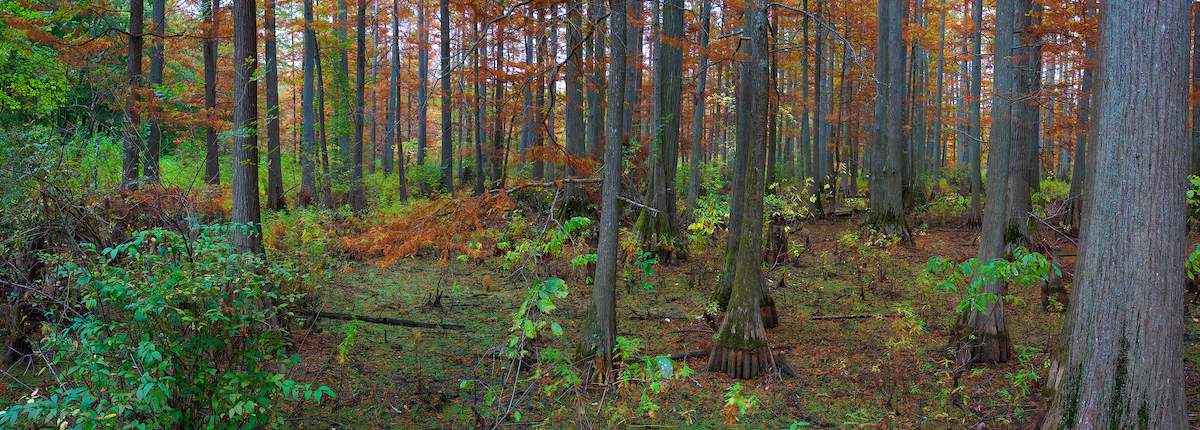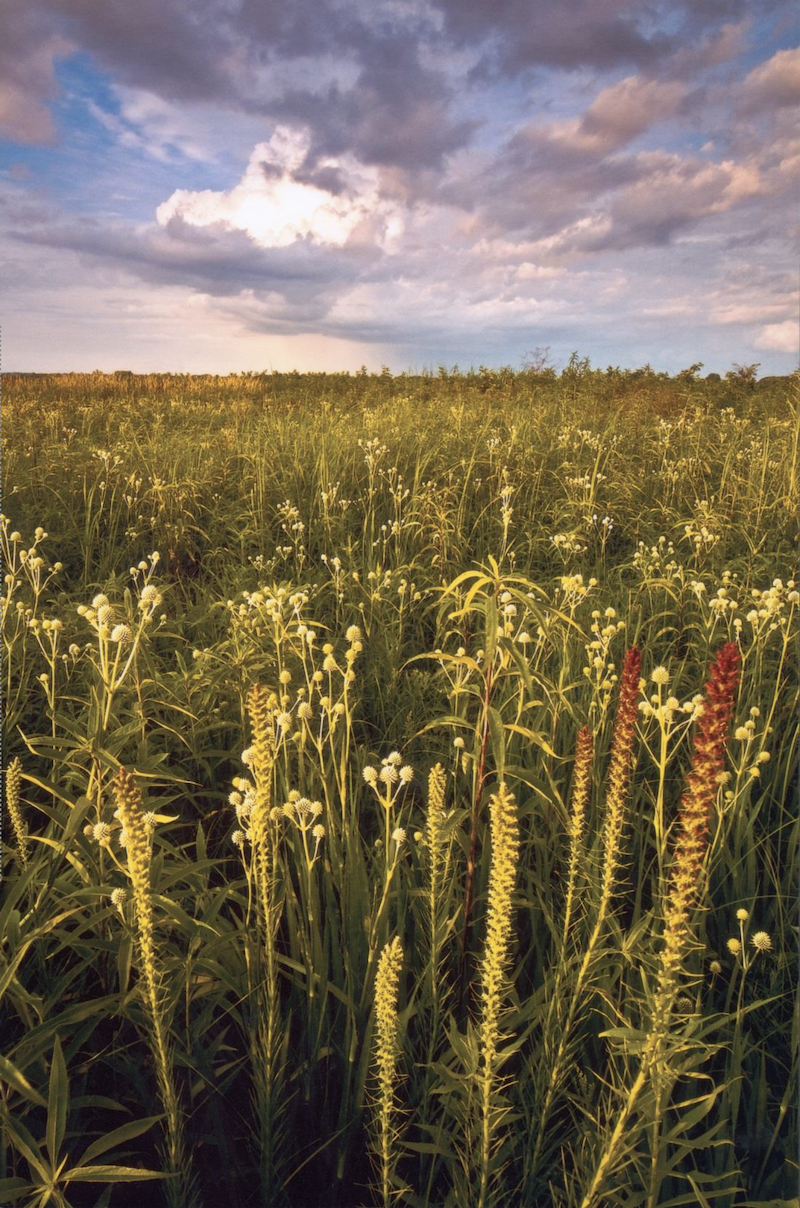
Revis Hill Prairie Nature Preserve was dedicated in 1973 as the 45th Illinois nature preserve. The IDNR-owned Mason County preserve is one of the largest and finest loess hill prairies in the state. Photo courtesy of the IDNR.



Revis Hill Prairie Nature Preserve was dedicated in 1973 as the 45th Illinois nature preserve. The IDNR-owned Mason County preserve is one of the largest and finest loess hill prairies in the state. Photo courtesy of the IDNR.

Thanks to visionaries 60 years ago, Illinois has a network of protected forests, prairies, wetlands, and other natural communities that constitute the Illinois nature preserves system. These nature preserves are places of beauty and inspiration, sanctuaries for rare and endangered species, resources for public education and scientific research, examples of Illinois’ natural heritage, and critical resources for the future. In 2023 the Illinois Nature Preserves Commission (Commission) celebrates its 60th anniversary. More than 600 sites are now protected as Illinois nature preserves and land and water reserves.
Illinois became a national leader in conservation when Governor Otto Kerner signed legislation establishing the nature preserves system and Nature Preserves Commission on August 28, 1963. This preceded some of the most historic conservation initiatives, such as the first Earth Day on April 22, 1970 and passage of the Clean Water Act and Clean Air Act in 1970. The Illinois nature preserves system became a model for many other states.
George B. Fell founded the Illinois nature preserves system. Throughout his life, he was tenacious – and uncompromising – in his commitment to preserve natural lands. Fell grew up outside Rockford, Illinois where he developed a love of the natural world from a young age. He earned a degree in botany from the University of Illinois and master’s degree in wildlife management from the University of Michigan. Following his university education, Fell had several conservation-related jobs in Illinois during which he first promoted the need to protect a system of natural area reserves. This was the late 1940s.

Fell and his wife, Barbara, moved to Washington, D.C. on Jan. 1, 1950. He played a key role in founding The Nature Conservancy (TNC) and leading the nascent organization. Fell resigned from TNC in 1958, due to internal disagreements over organizational management. He returned to Rockford where he created the non-profit Natural Land Institute (NLI). He dedicated himself to passing legislation to establish an Illinois nature preserves system. To separate his non-profit organization from lobbying activities, he formed the Citizens Committee for Nature Conservation.
Bills passed the Illinois General Assembly in 1961 with widespread support, but Governor Kerner vetoed them due to concerns about the organizational structure within state government. Fell was focused on creating an independent commission free of undue influence from competing interests. He tried again in 1963, and two competing bills passed. Governor Kerner vetoed Fell’s bill creating an independent commission and signed legislation placing the Commission under the umbrella of the Illinois Department of Conservation (IDOC), the precursor to the Department of Natural Resources. Nevertheless, Fell devoted himself to implementing the new legislation.
The authorizing legislation has been amended and strengthened over the years, but the basic components remain the same and have stood the test of time. “Nature preserve” has a very specific meaning as a natural area which has been formally dedicated to be maintained as nearly as possible in its natural condition. Nature preserves are declared put to their highest, best, and most important use and can’t be used for any other purpose. Nature preserves are not owned by the INPC; both public and private landowners may voluntarily dedicate qualifying sites. Uses are restricted to activities that will not adversely affect the natural features. Nature preserves dedication is the strongest means of protection for natural areas in Illinois. It is a permanent encumbrance and transfers with sale of the property.

The Commission determines areas that qualify for dedication, encourages landowners to dedicate eligible properties, approves dedications, guides management, and serves as advocates for natural areas preservation. There are nine commission members appointed by the Governor. Directors of the Illinois State Museum and Natural History Survey are charged with making recommendations for appointments. Unsurprisingly, Fell expressed his opinion on who, and who should not, be appointed to the Commission. The governor appointed Fell to serve on the newly established Commission. Although he desired to be chair, Fell was elected secretary. He used this position to establish and grow the nature preserves system and his leadership with the Commission.
Lands owned by the IDOC and the Cook County Forest Preserve District were the first to be dedicated. At the first meeting of the Commission in January 1964, the Commission approved dedicating the southern part of Illinois Beach State Park as a nature preserve. The governor formally approved dedicating this unique area of sand prairie, low dunes and marshland on Oct. 16, 1964. Charles G. Sauers, who led the Cook County Forest Preserve District from 1929 to 1964, was appointed to the Commission. In December 1964, 11 areas covering more than 4,000 acres within the forest preserve district were also dedicated (Black Partridge Woods, Busse Forest, Cap Sauers Holdings, Cranberry Slough, Jurgenson Woods, Pawpaw Woods, Salt Creek Woods, Sand Ridge Prairie, Shoe Factory Road Prairie, Spring Lake, and Sweet Woods-Zander Woods).
Initially the Commission relied on surveys conducted by the state’s leading biologists to identify lands recommended for inclusion in the nature preserves system. Fell not only proposed dedicating lands already in public ownership, he was a tireless advocate for acquiring natural areas. He devoted his own energies and resources of the NLI while also urging IDOC to purchase high quality lands. Castle Rock State Park in Ogle County and Heron Pond along the Cache River are examples. Dan Malkovich and Henry Barkhausen followed William Lodge as directors of the IDOC and were sympathetic to acquiring natural areas.
The nature preserves system grew through a series of strategic initiatives in the 1970s and early 1980s. Throughout this time, Fell and the NLI provided leadership and staff support for the Commission. In 1970, Fell resigned as commissioner to staff the commission as its first executive secretary under the auspices of the NLI.

A map outlining The Natural Divisions of Illinois was developed in 1973 and served as a cornerstone for the nature preserves system. The state was divided into 14 natural divisions and subdivided into 33 sections based on topography, soil types, bedrock, glacial history and distribution of plants and animals. The goal was to include in the nature preserves system representative examples of natural areas in each natural division and section.
The three-year Natural Areas Inventory, completed in 1978, was a systematic effort to find, evaluate, and classify natural areas. Funded by IDOC, the comprehensive inventory involved analyzing existing information and conducting aerial and field surveys. It revealed that only seven hundredths of one percent of Illinois land reflected natural conditions prior to European settlement; 1,089 significant natural areas were identified. The Illinois Natural Areas Inventory has been periodically updated and is actively maintained by IDNR’s Natural Areas Program. Currently there are 1,515 identified natural areas.

A comprehensive landowner contact program followed the inventory, carried out by NLI staff operating as field representatives for the Commission. Landowners were informed of the significance of their property and encouraged to preserve it. The Natural Heritage Landmark Program was created to recognize landowners who voluntarily protected their property. The longer term goal was more permanent protection. Over the years, many Natural Heritage Landmarks have become nature preserves as a result of ongoing communication with landowners. The Natural Heritage Landmark Program continues to be used as a stepping stone to permanent legal protection in the nature preserves system for private landowners.
The 1980 Illinois Natural Areas Plan represented a public commitment by the state to act upon the needs revealed by the Natural Areas Inventory and set priorities for preservation. The plan was a joint effort of the IDOC, the Commission and Illinois Endangered Species Protection Board. The inventory also spurred a greater investment by the state in acquiring natural areas. This was reflected in Governor James Thompson’s State of the State message on Jan. 9, 1980. “It is time to do more to purchase and set aside some of our lands still in their natural state for the future use and enjoyment of our people,” said Thompson. “We have long deferred land-banking against the day when our fiscal condition would be strong enough to begin to invest in this natural heritage. This year, we can make a start.”
For nearly two decades, Fell and the NLI served as staff for the Commission. NLI contributed additional resources beyond the contract with IDOC funded through a state appropriation. This changed in 1982. IDOC did not renew the contract with NLI and instead insisted the Commission director be located in Springfield. The Commission proceeded to hire its first staff director based in Springfield, titled program coordinator.
The transition involved significant challenges. The Commission budget was the lowest since 1969. With only one staff member, in contrast to 10 provided through NLI, the Commission relied on partnerships with other organizations. TNC agreed to hire several former Commission field representatives, and the NLI retained some staff dedicated to natural areas preservation. Landowner contacts continued, and many new nature preserves were dedicated. The Commission also collaborated with TNC to create a volunteer program to engage citizens in management activities on preserves. Rules for Management of Nature Preserves were officially adopted, numerous master plans were developed, and the William and Emma Bohm Memorial Nature Preserve in Madison County, dedicated in 1982, became the first privately owned nature preserve.

More nature preserves were dedicated in 1983 and 1984 than in any other previous two-year period. In 1983 the privately owned Harper’s Woods in Stark County became the 100th nature preserve.
“These 100 nature preserves constitute an important natural treasure that we are bequeathing to the generations that will follow,” said Governor Thompson. The Natural Areas Preservation Act of 1983 strengthened the nature preserves statute. In 1984 the budget was increased, and two former field representatives were hired by the Commission. In 1985, significant funding for natural areas acquisition was included in Governor Thompson’s Build Illinois infrastructure initiative.
All of this laid a strong foundation for the future. Then – and now – the Commission’s success is the result of collaborations and dedicated individuals – Commissioners, staff, landowners, volunteers, and interested citizens – who are committed to protecting Illinois’ natural areas for future generations.
Karen Ackerman Witter coordinated development of the Natural Areas Plan and served as the Illinois Nature Preserve Commission’s program coordinator from 1982 – 1985. She then served as natural resources policy advisor to Governor Thompson, director of the Department of Energy and Natural Resources, director of the IDNR Office of Scientific Research and Analysis and Associate Director of the Illinois State Museum.
She is the owner of Witter’s Bobtown Hill Prairie Nature Preserve in Menard County. She purchased this natural areas inventory site in 1984 with the intent to dedicate it as a nature preserve. The landowner offered to sell the land, having learned of its significance through the landowner contact program, and there was no public agency interested in purchasing the property at the time.
Submit a question for the author